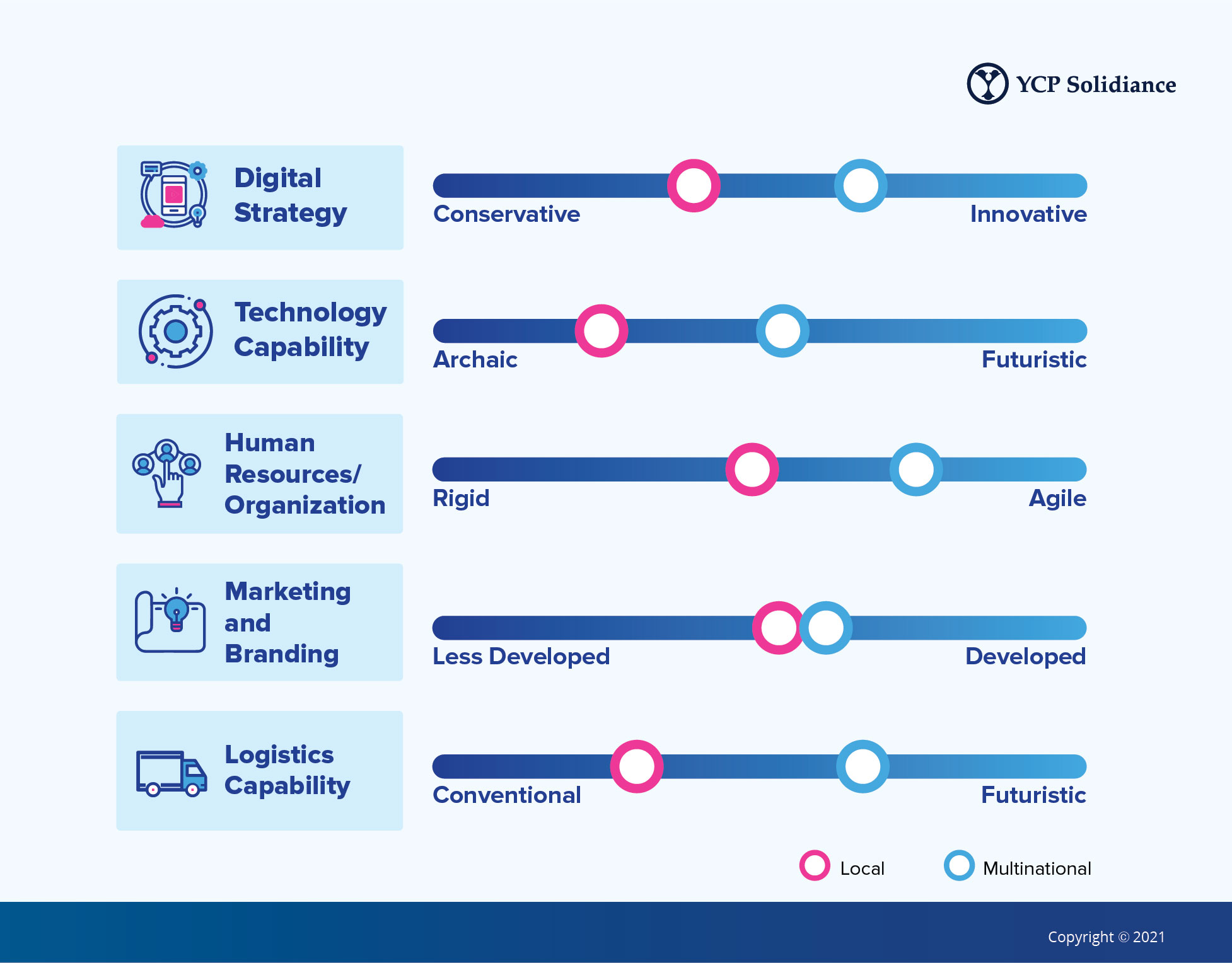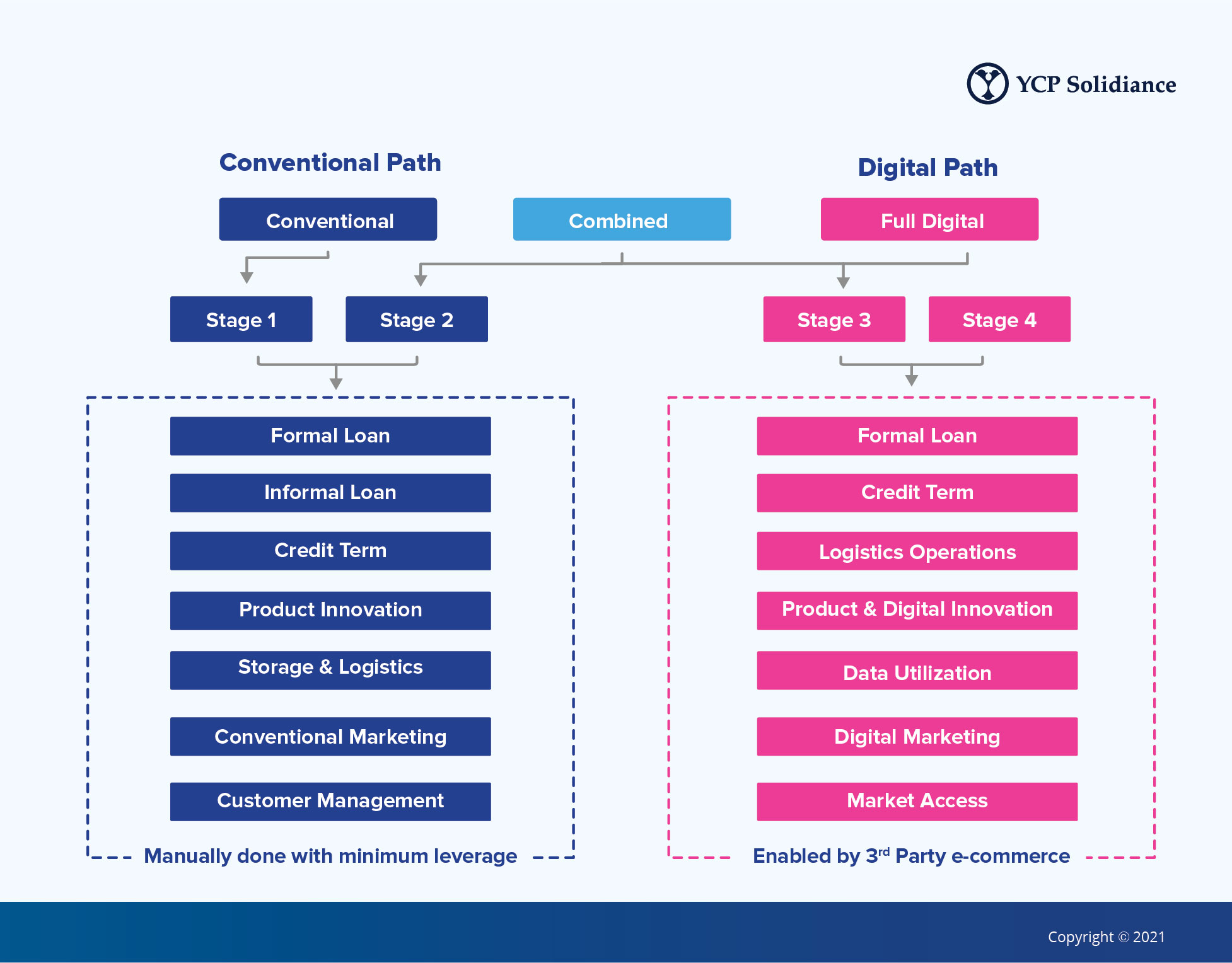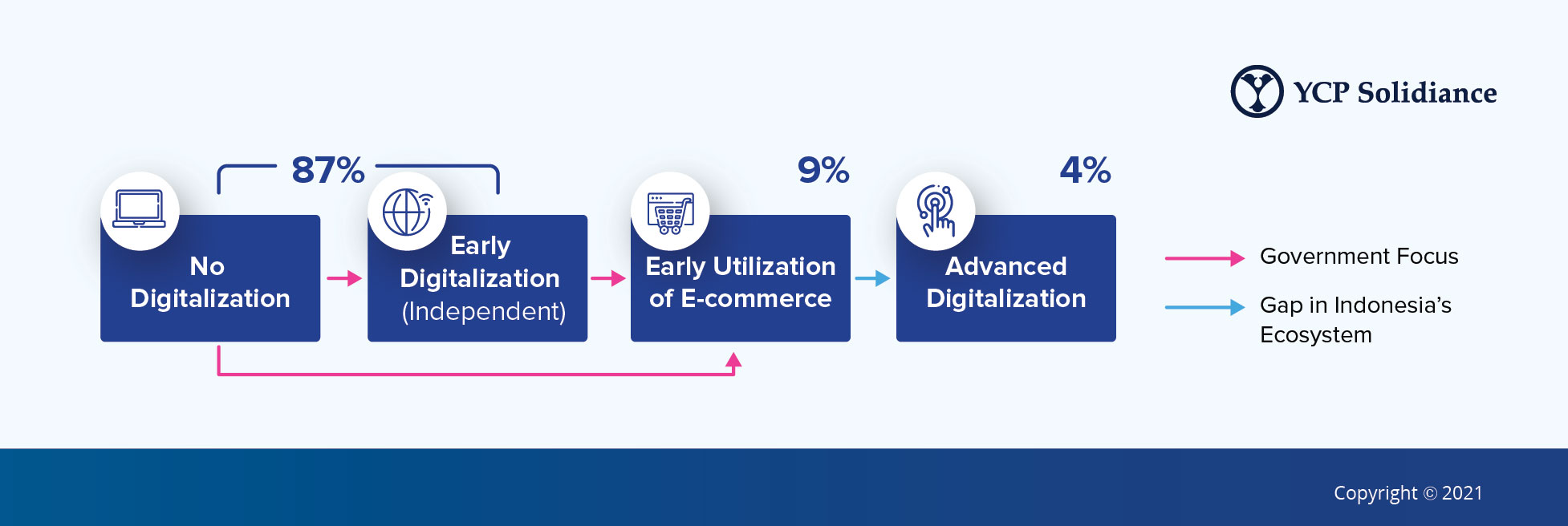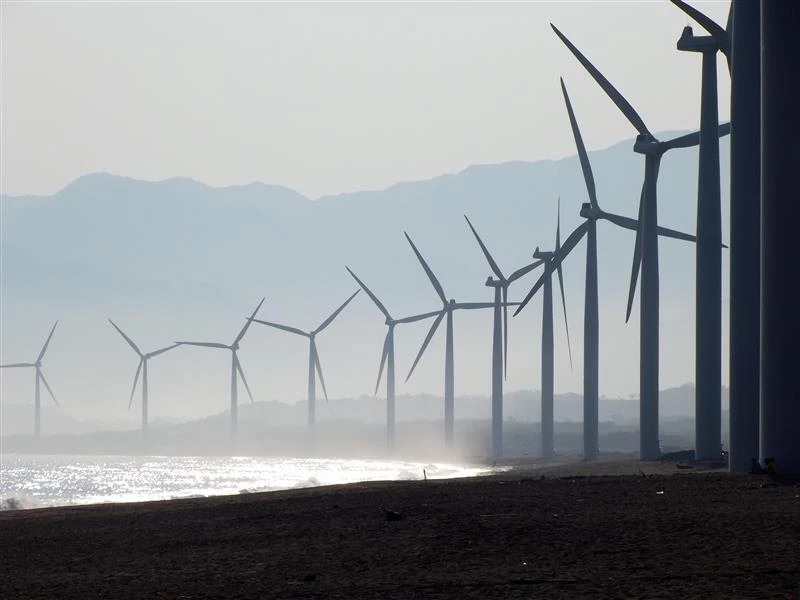Digital commerce has become an essential part of our everyday lives. From contributing only 2% back in 2015, this sector has grown by an astonishing 76.3% CAGR in 2020, with an expected growth of close to 16% between 2020 and 2025. Within the next five years, e-commerce is expected to account for 27% of Indonesia’s total transactions.
E-commerce in Indonesia plays a significant role in generating and nurturing the digital sector, with the digital economy’s sales mainly coming in from these platforms. However, despite the growing notion of the digital economy, the adoption level of digitalization still varies widely between large corporations and MSMEs (micro, small, and medium enterprises). While digitalization is a common thing for large businesses, the adoption rate remains a significant hurdle for MSMEs, with only 13% of MSMEs being digitally present.
E-commerce Eases Digital Transformation for Corporations
Around 90% of large corporations have been using digital technologies for core business processes and operations improvement, highlighting how more businesses are quicker to adapt and understand digitalization needs. However, when it comes to digital transformation, i.e., utilizing digital technologies across organizational development and business strategy, only 55% of companies are currently in this stage.
Beyond the low-to-medium adoption of digital transformation, there are significant differences between MNCs (Multi-National Corporations) and Local Corporations, which can be seen in the graph below.
As mentioned previously, e-commerce would hold a central role in shaping the future of Indonesia’s digital economy. In large corporations, e-commerce would contribute more to the advanced digitalization building blocks, such as utilizing technology to connect with customers. All these aspects would boost companies to achieve digital transformation at a low cost, as the companies would not need to build digital infrastructure.
E-commerce Provides End-to-End Solutions for MSMEs
For MSMEs, digital adoption would remain to be the most crucial challenge in Indonesia. With only 13% of MSMEs having a digital presence, the failure to adapt would result in Indonesia’s MSMEs not being able to tap into the potential of digital commerce, as shown in the diagram below.

Beyond the basic building blocks, e-commerce providing education modules would also help MSMEs not only enter e-commerce platforms, but allow them to be more analytical and effective in managing their businesses in the long run.
The Future of Digital Economy in Indonesia
As the digital economy grows, e-commerce platforms’ impact on the community does as well. Effective and cost-efficient access would enable a more effective transition into digital transformation, creating a mutually beneficial relationship that helps both the seller and the e- commerce platform grow.
With different challenges faced by large corporations and MSMEs, it is crucial for e-commerce platforms to tailor their approach and features for large corporations differently than those for MSMEs in Indonesia. Utilizing the right strategy will attract the most sellers and grow the platforms while at the same time benefiting the sellers in the long run.






